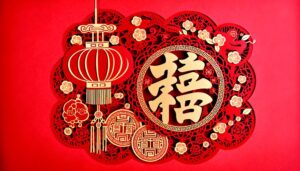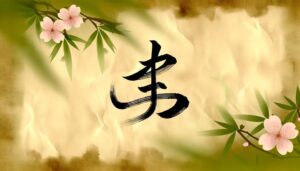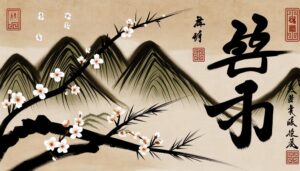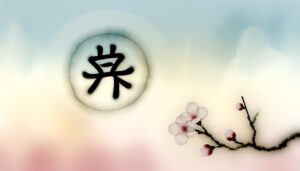Writing and Understanding the Chinese Symbol for ‘God My Strength’
The Chinese symbol for 'God is my strength' melds ancient philosophical and spiritual traditions. Emerging from Taoist and Confucian principles, it symbolizes celestial power intertwined with personal resilience.
Comprising elements that denote divine authority and human perseverance, the character underscores a synthesis of diverse doctrinal views, portraying strength as both a divine endowment and an intrinsic human quality. Culturally, it evokes millennia-old values of alignment with higher powers and moral fortitude.
This emblem, deeply etched in the spiritual and artistic heritage of China, invites deeper exploration into its layers of historical and philosophical significance.

Key Takeaways
- The Chinese symbol for "God is my strength" signifies a deep spiritual belief in divine support and personal resilience.
- It combines elements representing celestial power, human perseverance, and spiritual fortitude.
- The symbol reflects ancient Taoist, Confucian, and Buddhist influences, emphasizing harmony between divine guidance and human effort.
- It is used in various modern contexts, including jewelry, tattoos, home decor, and digital media, as a reminder of spiritual strength.
- Artistic representations, such as calligraphy and ink wash paintings, express the symbol's elegance and profound spiritual significance.
Historical Background
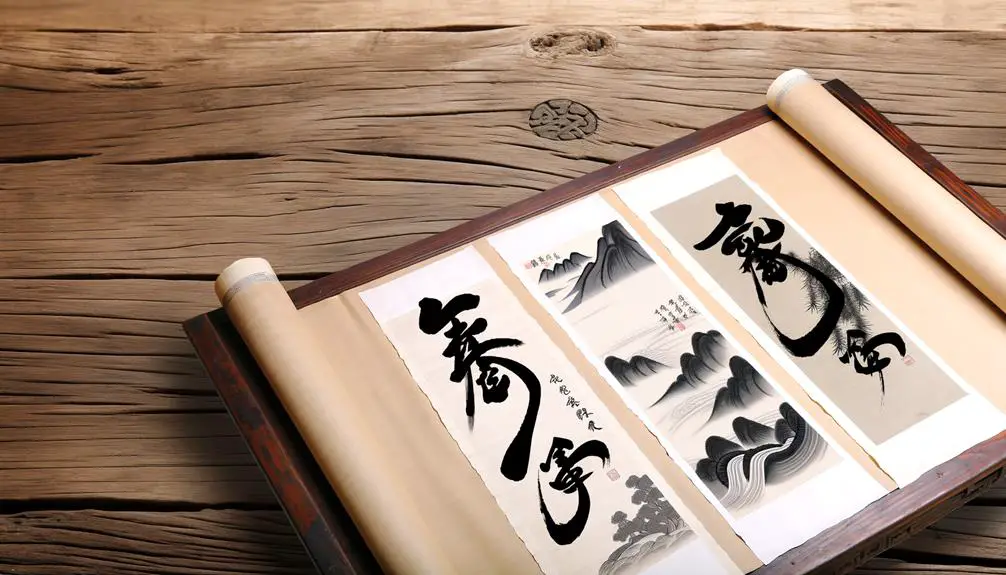
The historical roots of the Chinese symbol for 'God is my strength' can be traced back to ancient Chinese religious and philosophical traditions that have long interwoven concepts of divine power and personal fortitude. Originating in early Taoist and Confucian thought, these traditions emphasized the harmonious relationship between human beings and the divine.
Texts such as the Tao Te Ching highlight the importance of aligning oneself with the Tao, or the fundamental nature of the universe, to gain strength and wisdom. Additionally, the influence of Buddhism, which arrived in China around the first century CE, contributed to the spiritual lexicon, enriching the cultural and symbolic landscape.
Therefore, the symbol embodies a synthesis of diverse spiritual doctrines that underscore divine empowerment and inner resilience.
Symbolic Meaning
Drawing from this rich tapestry of spiritual traditions, the Chinese symbol for 'God is my strength' encapsulates profound layers of meaning that resonate with the principles of divine support and personal fortitude. The character combines elements that signify celestial power and human resilience.
| Element | Representation | Meaning |
|---|---|---|
| 天 (Tiān) | Heaven/Divine | Symbolizes divine authority |
| 力 (Lì) | Strength/Power | Denotes physical and moral strength |
| 我 (Wǒ) | Self/Personal | Represents individual agency |
| 神 (Shén) | God/Spirit | Conveys spiritual force |
Each component weaves together a complex, yet harmonious message of unwavering faith and inner strength, illustrating how divine influence empowers human perseverance. This synthesis forms a compelling narrative, reinforcing the holistic view of strength as both a divine gift and a personal attribute.
Cultural Significance
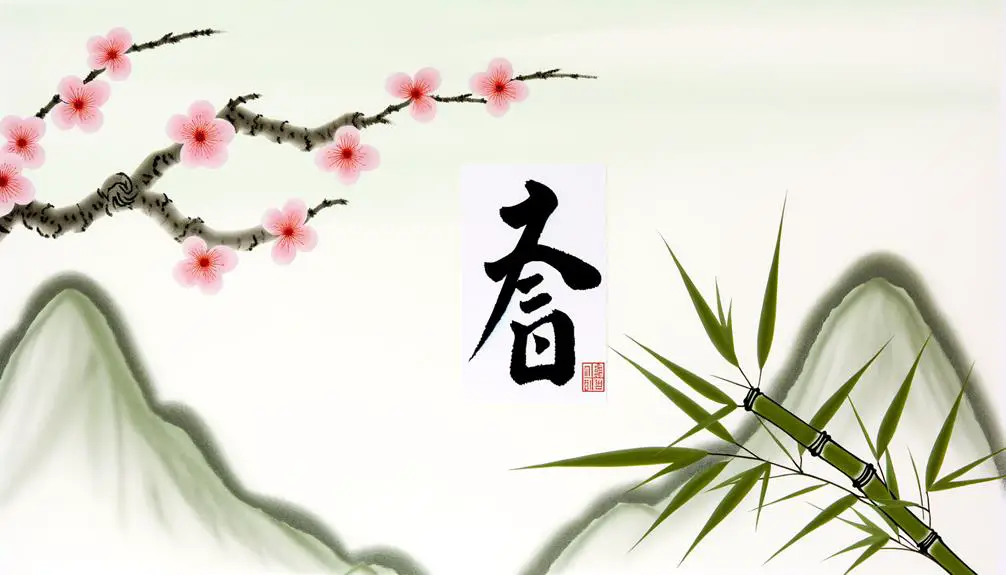
In examining the cultural significance of the Chinese symbol for 'God is my strength,' it becomes evident that this emblem encapsulates a deeply ingrained reverence for the interplay between divine providence and human resilience, reflective of millennia-old philosophical and spiritual traditions.
Historically, Chinese culture has deeply valued the harmonization of human efforts with celestial guidance, as seen in Confucian, Taoist, and Buddhist doctrines. The symbol resonates with the Confucian ideal of moral fortitude, the Taoist pursuit of balance, and the Buddhist emphasis on inner strength through spiritual practice.
This synthesis of beliefs underscores a collective cultural ethos where divine strength is not merely an external force but an intrinsic part of human existence, providing a foundation for enduring resilience and moral integrity.
Spiritual Context
In examining the spiritual context of the Chinese symbol for 'God is my strength,' one must consider the ancient spiritual beliefs that shaped its creation and usage.
This symbol encapsulates a profound symbolic interpretation rooted in millennia-old traditions, reflecting a deep-seated reverence for divine power and protection.
Its cultural significance is intertwined with the historical evolution of spiritual practices, illustrating how the concept of divine strength has been revered and manifested in Chinese spirituality.
Ancient Spiritual Beliefs
Rooted deeply in the fabric of ancient Chinese civilization, spiritual beliefs often intertwined with daily life, imbuing symbols such as the one for 'God' with profound significance and reflecting the intrinsic strength derived from divine guidance. Ancient Chinese spirituality was a complex amalgamation of Taoism, Confucianism, and Buddhism, each contributing to the cultural and religious landscape.
Taoism emphasized harmony with the Tao, the ultimate principle of the universe, while Confucianism focused on moral virtues and social harmony. Buddhism, introduced later, added layers of metaphysical and ethical thought. These spiritual traditions influenced the creation of ideograms, where symbols were crafted not just for their linguistic value but also for their ability to convey deep spiritual truths and existential strength.
Symbolic Interpretation
The profound spiritual heritage of ancient Chinese beliefs finds its most poignant expression in the symbolic interpretation of ideograms, where the character for 'God' encapsulates the divine strength and guidance revered in Taoism, Confucianism, and Buddhism.
This ideogram, often represented by the character '神' (shén), conveys a multifaceted spirituality that transcends mere linguistic boundaries. In Taoism, '神' embodies the mystical harmony with the Tao, reflecting the divine essence that permeates all existence. Confucianism interprets it as a guiding moral force, emphasizing righteousness and ethical conduct.
Buddhism, meanwhile, views it as a representation of an enlightened state, symbolizing ultimate spiritual strength. Hence, the character '神' serves as a profound emblem of the spiritual fortitude and guidance sought by adherents.
Cultural Significance
A deeply ingrained aspect of Chinese culture, the character '神' (shén) embodies a spiritual resonance that has woven its way into the fabric of religious practices and philosophical teachings across millennia. This symbol signifies not only divine entities but also the profound spiritual connection between humanity and the cosmos. In Confucianism, Daoism, and Buddhism, '神' encapsulates the essence of the divine, the metaphysical, and the supernatural.
| Religion/Philosophy | Interpretation of '神' (shén) | Cultural Significance |
|---|---|---|
| Confucianism | Ancestral spirits | Reverence for ancestors |
| Daoism | Immortal beings | Harmony with the Dao |
| Buddhism | Enlightened beings (Bodhisattvas) | Path to enlightenment |
| Folk Beliefs | Local deities and spirits | Community and protection |
This multifaceted symbol continues to influence contemporary spiritual practices in China.
Linguistic Roots
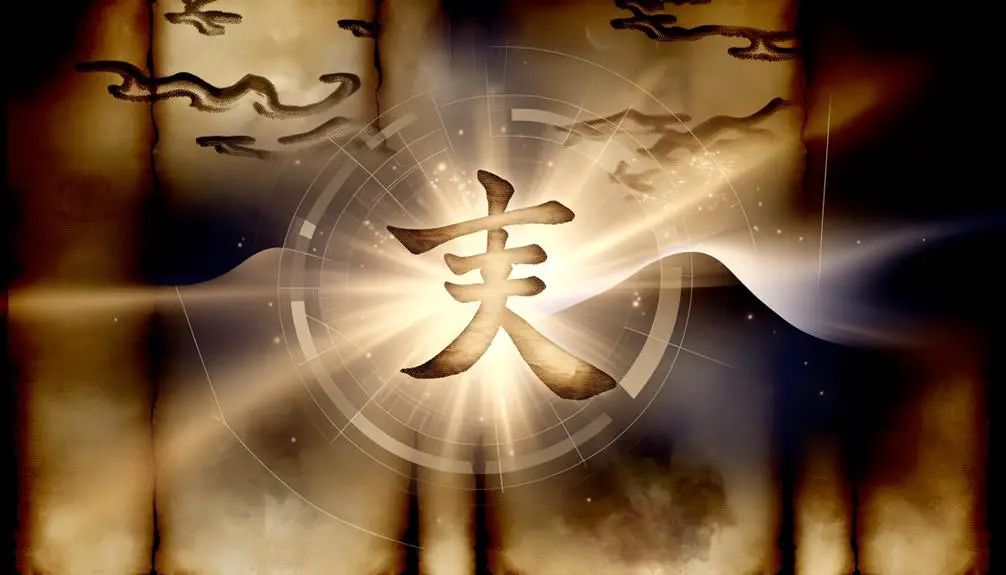
The linguistic roots of the Chinese symbol for 'God is my strength' are deeply embedded in the etymology and cultural significance of the characters used.
Tracing the historical development of these characters reveals their evolution from ancient script forms, each carrying intrinsic spiritual and philosophical connotations.
Understanding these origins provides a profound insight into how the symbol encapsulates both divine empowerment and cultural heritage.
Etymology and Origin
Rooted in the ancient script of Oracle Bone Inscriptions, the Chinese symbol for 'God' (神, shén) embodies profound historical and cultural significance. This character has evolved through millennia, from its earliest form in the Shang Dynasty to its standardized form in modern script.
The etymology of 神 (shén) reveals intricate connections to spiritual and natural elements, reflecting the ancients' reverence for divine forces.
- Oracle Bone Inscriptions: Earliest known usage, dating back to the 14th century BCE.
- Seal Script: Intermediate form used during the Qin and early Han Dynasties.
- Clerical Script: Simplified and more uniform, prevalent during the Han Dynasty.
- Modern Simplified Script: Adopted in contemporary China for ease of writing.
- Phonetic Component: Shares phonetic elements with the character 申 (shēn), indicating its linguistic roots.
Cultural Significance
Intricately woven into the fabric of Chinese culture, the symbol for 'God' (神, shén) not only signifies a divine presence but also encapsulates the linguistic and philosophical essence of reverence and strength in the human experience.
The character 神 is composed of 礻 (shì), denoting ritual or worship, and 申 (shēn), which implies communication or extension. This synthesis underscores the intrinsic link between spirituality and human endeavors in seeking divine strength.
Historically, the term shén has permeated various aspects of Chinese thought, from Confucianism to Daoism, embodying the cultural veneration of higher powers. Hence, 神 serves as a linguistic conduit through which the Chinese people articulate their respect for the divine and their quest for inner fortitude.
Artistic Representations
In examining the artistic representations of the Chinese symbol for 'God is my strength,' one can observe a rich tapestry of cultural influences and aesthetic principles that have evolved over centuries.
This symbol, deeply embedded in Chinese calligraphy and art, has been expressed through various mediums. The integration of spiritual themes and artistic traditions results in creations that are both visually enchanting and spiritually resonant.
- Calligraphy: Elaborate strokes combining elegance and vigor.
- Ink Wash Paintings: Subtle gradations expressing divine strength.
- Seal Carvings: Intricate designs symbolizing permanence.
- Silk Embroidery: Delicate threads embodying divine grace.
- Bronze Inscriptions: Ancient techniques reflecting historical reverence.
Each representation not only signifies 'God is my strength' but also encapsulates the profound depth of Chinese cultural heritage.
Modern Usage

The modern usage of the Chinese symbol for 'God is my strength' serves as a proof to the enduring relevance of ancient spiritual and cultural motifs in contemporary society. This symbol transcends traditional boundaries, finding its place in various modern contexts. From religious paraphernalia to contemporary art, the symbol is a confirmation of its timeless significance. Below is a table illustrating its diverse applications:
| Application | Description |
|---|---|
| Jewelry | Emblems of faith worn as pendants or bracelets |
| Tattoos | Personal expressions of faith and strength |
| Home Decor | Wall art and decorative items in living spaces |
| Digital Media | Icons and graphics used in apps and websites |
This diversity underscores the symbol's adaptability and its profound cultural resonance.
Personal Stories
Amidst its diverse applications, the Chinese symbol for 'God is my strength' has deeply impacted the lives of individuals who incorporate it into their personal narratives, serving as a source of inspiration and resilience. This emblem transcends mere aesthetics, embedding itself into the emotional and spiritual fabric of those who embrace it.
Personal stories reveal profound connections:
- Tattoos: Many individuals choose this symbol as a permanent mark on their bodies, signifying enduring faith.
- Calligraphy: Artists incorporate the symbol into their works, fostering introspection and meditative practices.
- Jewelry: Wearing the symbol on pendants or bracelets provides daily reminders of spiritual strength.
- Home Decor: Displaying the symbol at home creates an environment imbued with divine presence.
- Ceremonial Uses: The symbol often appears in important life events, symbolizing divine guidance.
Comparative Symbols
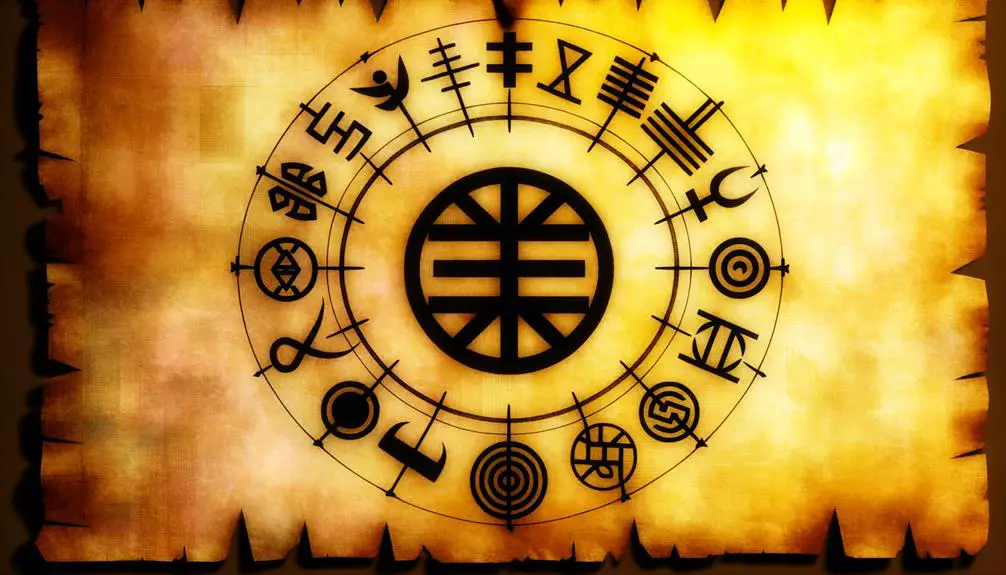
To thoroughly appreciate the Chinese symbol for 'God is my strength,' one must consider the broader landscape of cultural symbolism differences and the various religious symbol variations.
These symbols often carry distinct interpretations across languages, reflecting diverse theological and philosophical traditions. By examining these comparative symbols, we gain deeper insight into how different cultures conceptualize divine strength and support.
Cultural Symbolism Differences
How do varying cultural paradigms influence the interpretation and significance of symbols, such as the Chinese character for 'God is my strength,' in comparison to analogous symbols in other traditions?
Cultural context plays a pivotal role in shaping the meanings ascribed to symbols. The Chinese character intertwines spiritual strength with ancient philosophical foundations, diverging from other traditions where symbols might emphasize different aspects of divine power.
- Chinese: Emphasizes spiritual fortitude and philosophical depth.
- Christian Cross: Represents sacrifice and redemption.
- Hindu Om: Symbolizes the universe and ultimate reality.
- Islamic Calligraphy: Reflects the beauty and majesty of divine words.
- Native American Totems: Embody ancestral spirits and natural forces.
Understanding these differences enriches cross-cultural appreciation and highlights the unique pathways through which cultures express profound truths.
Religious Symbol Variations
Examining the intricate variations in religious symbols, such as the Chinese character for 'God is my strength' alongside the Christian Cross, Hindu Om, Islamic Calligraphy, and Native American Totems, reveals profound insights into how distinct cultures articulate their spiritual and metaphysical beliefs.
The Chinese character integrates calligraphic precision with profound philosophical meaning, emphasizing divine empowerment.
The Christian Cross, a symbol of sacrifice and salvation, contrasts with the Hindu Om, which encapsulates the universe's sacred sound.
Islamic Calligraphy, often depicting Allah's name, exemplifies divine unity and artistic devotion.
Native American Totems, embodying spiritual guardianship and ancestral lineage, further illustrate the diversity in expressing sacred concepts.
These symbols collectively enhance our understanding of humanity's varied spiritual expressions.
Interpretations Across Languages
The comparative study of symbols across different languages reveals a rich tapestry of cultural nuances and spiritual interpretations, where each symbol encapsulates unique historical, philosophical, and theological contexts. This exploration highlights how the concept of divine strength is expressed and revered globally, reflecting varied religious and cultural landscapes.
Chinese: The character '神' (Shén) signifies divine presence and power, often linked to spiritual strength.
Hebrew: The word 'אלוהים' (Elohim) embodies the omnipotent force and strength derived from God.
Greek: The term 'Θεός' (Theos) represents divine strength, deeply rooted in ancient philosophical thought.
Sanskrit: The symbol 'देव' (Deva) illustrates divine strength, integral to Hindu spiritual traditions.
Arabic: The word 'الله' (Allah) conveys the ultimate source of strength and power in Islamic teachings.
These symbols illustrate the universal quest for divine strength across diverse cultures.
Inspirational Quotes
Inspirational quotes often serve as profound reminders of personal strength and resilience, resonating deeply with the cultural and spiritual significance embedded in symbols such as the Chinese character for 'God is my strength.' These quotes transcend linguistic boundaries and offer universal messages of hope and fortitude.
Consider the following table of quotes that encapsulate the essence of strength and divine support:
| Quote | Author | Cultural Context |
|---|---|---|
| "God is within her, she will not fall." | Psalm 46:5 | Biblical |
| "The greatest glory in living lies not in never falling, but in rising every time we fall." | Nelson Mandela | Global |
| "Faith does not make things easy, it makes them possible." | Luke 1:37 | Christian Scripture |
These sayings illustrate how faith and inner strength are interwoven across cultures, enriching our collective human experience.
Conclusion
The Chinese symbol for 'God is my strength' encapsulates profound historical, spiritual, and cultural dimensions.
Much like an ancient tree whose roots stretch deep into the soil, drawing sustenance from the earth.
This symbol, intertwined with linguistic and spiritual narratives, conveys a timeless message of divine empowerment.
Its modern usage and comparative symbols further illuminate its significance, enriching the tapestry of human experience and providing a beacon of hope and resilience across generations.

